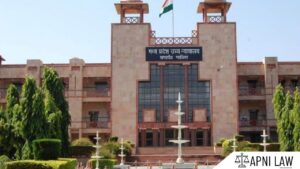Code: Section 345 BNS
Definition and Offense Related to Property Marks
(1) A mark used for denoting that movable property belongs to a particular person
is called a property mark.
(2) Whoever marks any movable property or goods or any case, package or other
receptacle containing movable property or goods, or uses any case, package or other
receptacle having any mark thereon, in a manner reasonably calculated to cause it to be
believed that the property or goods so marked, or any property or goods contained in any
such receptacle so marked, belong to a person to whom they do not belong, is said to use a
false property mark.
(3) Whoever uses any false property mark shall, unless he proves that he acted without
intent to defraud, be punished with imprisonment of either description for a term which may
extend to one year, or with fine, or with both.
Explanation of Section 345 BNS
Section 345 of the Bharatiya Nyaya Sanhita (BNS) defines what constitutes a property mark and outlines the legal consequences of using false property marks. A property mark serves as an identifier, denoting ownership of movable property. This could include items like goods, packages, or cases.
The law specifically addresses the use of false property marks—when someone knowingly marks goods to mislead others into believing they belong to someone else. The section also provides for the punishment of such offenses, including imprisonment, fines, or both, unless the accused can prove there was no intent to defraud.
Illustration
Example 1: Using a False Property Mark
A person places a label with the brand name of a well-known company on their own product to make it appear as if it is the original. This misleads customers into thinking they are purchasing genuine goods. Under Section 345, this act could lead to legal consequences unless the person can prove there was no intent to defraud.
Example 2: Accidental Use of a Property Mark
If a person accidentally uses a property mark that resembles another company’s mark without the intention to deceive, they may not be liable under this section, provided they can prove the lack of fraudulent intent.
Common Questions and Answers on Section 345 BNS
1. What is a property mark under Section 345?
- Answer: A property mark is any symbol, label, or mark used to denote ownership of movable property.
2. What is considered a false property mark?
- Answer: A false property mark is one that misleads others into believing that property belongs to someone else, intentionally or negligently.
3. What are the penalties for using a false property mark?
- Answer: The offender may face imprisonment for up to one year, a fine, or both, unless they prove they had no intent to defraud.
4. Can someone be punished if the use of the false mark was unintentional?
- Answer: Yes, but they must prove that there was no intent to defraud to avoid punishment under Section 345.
Conclusion
Section 345 of the Bharatiya Nyaya Sanhita (BNS) aims to protect property rights by criminalizing the use of false property marks. It ensures that ownership is not misrepresented, thus maintaining trust in transactions involving movable property. The section also balances fairness by providing a defense if the accused can prove there was no fraudulent intent.











